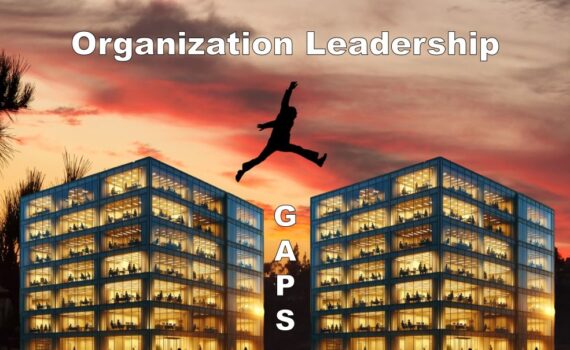What ORGANIZATION LEVEL Leadership Gaps Are You Bringing Into 2024?
Category : Leadership
In the last editions of the newsletter, we discussed individual and team leadership gaps and how they can impact your success as a leader. It’s important to identify and either fix or compensate for them. These gaps can either be small cracks and fix with some ‘leadership caulk’ or large potholes which may require some ‘leadership patch.’ If left unattended, a small gap can grow into a huge one for the leader. Either way, it’s important for leaders at all levels to regularly evaluate and correct their leadership gaps.

In this edition, we are going to examine organization level leadership gaps. This analysis identifies gaps across departments, across organization levels, across divisions and/or across locations. However an organization chooses to examine their leaders, this analysis can help them identify gaps or weaknesses in their organization’s leadership structure.
To perform this analysis, each leader’s individual assessment is compared to the average of their colleagues’ assessment in the same organization level, department, division or location. The summarized organization level assessment can also be compared to the population average of all participants at the same organization level, i.e. C-Level, Vice President, Director, Supervisor or Manager from our database.
Our data has revealed distinct differences in the leadership profiles by organization level. The radar charts below represent all of the leaders by title compared to the our population average. In the chart on the left, the C-Level executives are below the population average on all dimensions except for Visioning and Coaching (slightly) and only slightly below for Reflecting. They were above on the Vision dimension, which makes sense as the job of a C-Level executive is to provide the vision for their company or unit. The other dimensions below the population average are concerning. This could be because at this level, they no longer think about their potential and practice of leadership but behave more on autopilot. Unfortunately, this doesn’t work as leaders at all levels should continue to focus on their leadership every day.

In the chart on the right, the Vice Presidents are mostly above or at the population average on all nine dimensions. This contrasts with the C-Level participants who were below the population average on all but three dimensions. While the C-Level participants may be on leadership autopilot at this point in their career, the Vice President participants are still aspirational and remain focused on getting to the next level.
Below, in the chart on the left, the Directors are at or above the population average on all nine dimensions. The Director results is probably indicative of their aspirations at this point in their careers, which is very similar to the Vice President’s mindset. If anything, they are at an inflection point in their careers. Their next move could be their most important and set the tone for their long-term goals.

In the chart on the right, the Supervisors are below the population average on all nine dimensions. These leaders are not embracing or even knowing their innate qualities that will define their leadership potential. They are also not practicing any form of leadership process. Supervisors are still very early in their leadership career. They most likely performed well enough as a Manager and were promoted to Supervisor, with little regard for their leadership abilities. Organizations must recognize this critical point in their career and provide them with the leadership development support they need. The Managers results were very similar to the Supervisors.
This concludes our discussion on leadership gaps, although we will explore some of the nuances in future issues. The bottom line is that we all have leadership gaps and if left unattended, they can be detrimental to a leader’s career. Individual gaps may be the easiest to identify, but team and organization levels gaps identification can turbocharge an individual’s and organization’s growth. A data-informed approach to leadership management should become the rule, not the exception, for high-performing organizations in the future.
If you have questions about our leadership work, please contact us or learn more about our leadership resources management programs at LeadershipRMS.com. Have a great 2024!
“With Leadership, Anything is Possible!”
